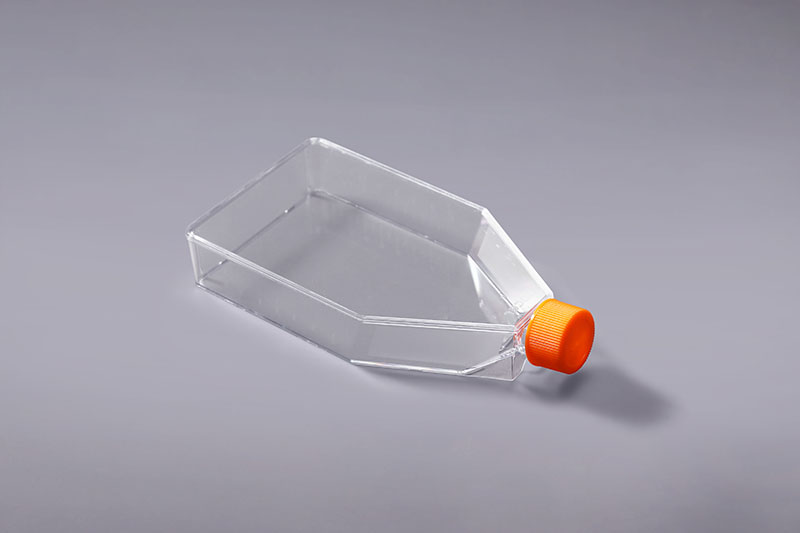Subculture refers to the process of dividing the culture into small parts, re-inoculating them into another culture vessel (bottle), and then culturing. Cell culture flasks are commonly used consumables when cultivating cells. So, how to subculture the cells in the flask?
Generally, the cells in the cell culture flasks grow into a dense monolayer and are basically saturated. In order to enable the cells to continue to reproduce and expand the number of cells, it is necessary to carry out passage operations. Suspended cells can be separated directly, while adherent cells need to be digested before they can be separated. Generally, proteolytic enzymes (such as trypsin) are used to digest adherent cells into single cells. Ethylenediaminetetraacetic acid (EDTA) can also be added to improve digestion. Observe the cells until the cells become round and detach from the bottle wall. This process often takes 5-15 minutes. In order to avoid cell clumps, do not tap the cell culture flasks during the process of digesting the cells.
For particularly difficult-to-digest cells, you can add trypsin EDTA digestion solution and place the cells at 37°C to facilitate digestion. After the cells are separated from the bottle wall, immediately add a complete medium containing serum to stop the digestion. Certain proteins in the serum can inhibit the pancreas. Enzyme activity. In general, centrifugation is not necessary. If the cells require serum-free or low-serum medium, centrifuge at 125000g for 5 minutes, then discard the discontinued medium, add appropriate new medium and gently mix the cells before subculture.
The cell passaging ratio is generally 1:2-1:20, depending on the cell type. In the process of passaging, trypsin will damage the cell membrane of some cells. You can use a cell scraper to gently scrape the cells, add an appropriate amount of medium, gently pipette to mix the cells, and transfer them to a new culture flask.
The FAI climbed 5.9 percent year-on-year in the first 11 months of 2018, quickening from the 5.7-percent growth in Jan-Oct, the National Bureau of Statistics (NBS) said Friday in an online statement.
The key indicator of investment, dubbed a major growth driver, hit the bottom in August and has since started to rebound steadily.
In the face of emerging economic challenges home and abroad, China has stepped up efforts to stabilize investment, in particular rolling out measures to motivate private investors and channel funds into infrastructure.
Friday's data showed private investment, accounting for more than 60 percent of the total FAI, expanded by a brisk 8.7 percent.
NBS spokesperson Mao Shengyong said funds into weak economic links registered rapid increases as investment in environmental protection and agriculture jumped 42 percent and 12.5 percent respectively, much faster than the average.
In breakdown, investment in high-tech and equipment manufacturing remained vigorous with 16.1-percent and 11.6-percent increases respectively in the first 11 months. Infrastructure investment gained 3.7 percent, staying flat. Investment in property development rose 9.7 percent, also unchanged.
 English
English



















































